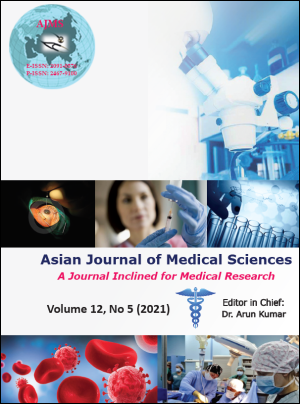Management of COVID-19 Related Myocarditis: A Systematic Review
Keywords:
COVID-19, Myocarditis, Arrhythmia, Diuretics, Systematic ReviewAbstract
On January 7 in China, one patient was identified with a new corona virus in throat culture, and World Health Organization called it severe acute respiratory syndrome coronavirus 2 (SARS-CoV-2). Herein, we aimed to summarize overall data for COVID-19 disease related myocarditis and its treatment. In the initial stages, patients developed symptoms of severe acute respiratory infection and afterwards other serious symptoms such as septic shock, metabolic acidosis, coagulation disorders, multiple organ failure problems developed.
Complications were mostly associated with pneumonia (91.1%) and acute respiratory distress syndrome. Before the Coronavirus Disease 2019 (COVID-19) infection, the presence of cardiovascular diseases has been found to increase the severity and side effects of primary respiratory syndrome. Since management of COVID-19 related myocarditis is crucial, 114 publications indexed in Pubmed between Dec 10, 2019 and October 16, 2020 were scanned extensively in this review in order to summarize the treatment options of COVID-19 related myocarditis. Analysis of 44.672 COVID-19 cases showed an increased risk of mortality in elderly people (14.8% for patients over 80 years old) and patients with cardiovascular disease (10.5%). Patients with diabetes (7.3%) and hypertension (6%) also demonstrated an increased risk of mortality. The rate of underlying chronic respiratory disease was 6.3%. Arrhythmia was found in 16.7% and acute heart injury existed in 7.2% of 138 hospitalized COVID-19 patients. ACE inhibitors or ARBs should be administered in patients with wall motion abnormality or heart failure with reduced EF. Diuretics should be considered in patients with volume overload and torsemide should be preferred as first option. Non-steroidal antiinflammatory drugs and cardiac glycosides should be avoided. Physical activity should be restricted until the disease resolved. IVIG and interferon therapy are feasible treatment options with reasonable side effect profile.
Downloads
Downloads
Published
How to Cite
Issue
Section
License
Authors who publish with this journal agree to the following terms:
- The journal holds copyright and publishes the work under a Creative Commons CC-BY-NC license that permits use, distribution and reprduction in any medium, provided the original work is properly cited and is not used for commercial purposes. The journal should be recognised as the original publisher of this work.
- Authors are able to enter into separate, additional contractual arrangements for the non-exclusive distribution of the journal's published version of the work (e.g., post it to an institutional repository or publish it in a book), with an acknowledgement of its initial publication in this journal.
- Authors are permitted and encouraged to post their work online (e.g., in institutional repositories or on their website) prior to and during the submission process, as it can lead to productive exchanges, as well as earlier and greater citation of published work (See The Effect of Open Access).




